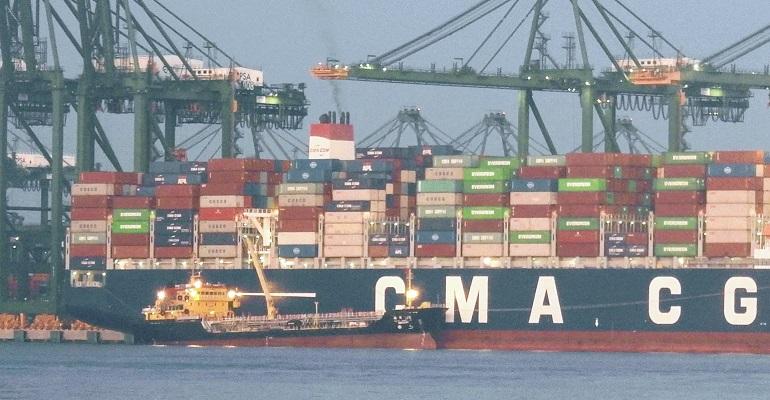The contamination problems were first flagged by a bunker alert issued by fuel tester VPS on 11 March, which was later picked-up by P&I Club Gard. According to the Maritime & Port Authority it was first informed on 14 March that a number of ships had been supplied with HFO containing high concentrations of Chlorinated Organic Compounds (COC) (1,2-Dichloroethane, Tetrachloroethylene).
MPA said preliminary investigations showed the fuel contaminated with 15,000 ppm from overseas sourced by Glencore Singapore was used in a blended product. Part of the of this blended product had then been sold to PetroChina International (Singapore), which in turn supplied it as fuel to vessels.
“To date, Glencore and PetroChina had supplied the affected fuel to about 200 ships in the Port of Singapore. Of these, about 80 ships have reported various issues with their fuel pumps and engines,” MPA said.
“MPA has conducted fuel sample tests for some of the affected ships and found elevated levels of COC in their fuel samples. This is the first case of fuel contamination due to high concentration levels of COC reported in Singapore in the past two decades.”
VPS CEO Malcolm Cooper said on Tuesday that it had identified 140,170 metric tonnes of fuel that had been contaminated with a market value of around $120m.
“We would advise our customers to be very aware that this contaminated fuel remains in the supply chain and could potentially be reused or re-blended for use as a bunker fuel,” Cooper said.
While fuels supplied in Singapore have to meet the ISO 8217 standard COC contamination would not show up in such tests. MPA noted Glencore had also performed additional testing of the fuel based on the American Society for Testing and Materials (ASTM) D7845 standard but it also does not test for COC.
Cooper from VPS said: “VPS therefore strongly recommend GCMS screening as the most effective method of detecting chemical contaminants in bunker fuel including chlorinated hydrocarbons.”
The MPA, which regulates the world’s largest bunkering port, said it was in discussions with the industry on implementing additional fuel quality checks that would screen for unacceptable chemicals in bunker fuel.
“As a major bunkering hub, MPA takes bunker quality assurance seriously and will not hesitate to take necessary actions against relevant parties if they have failed to comply with MPA’s bunker licence conditions or other applicable regulations,” the authority added.
The industry has feared a repeat of incidents in 2018 where contaminated bunkers first supplied in Houston spread to become a global problem.
Copyright © 2024. All rights reserved. Seatrade, a trading name of Informa Markets (UK) Limited.
Add Seatrade Maritime News to your Google News feed.  |

